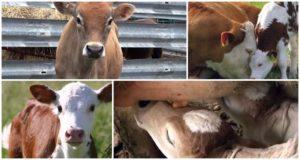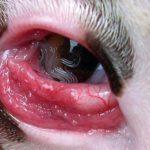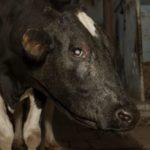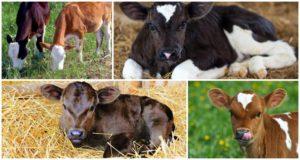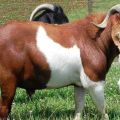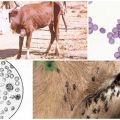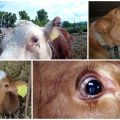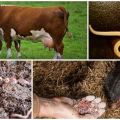Symptoms and biology of the development of thelaziosis in cattle, treatment and prevention
Cattle thelaziosis is understood as a dangerous pathology that can provoke the blindness of the animal. Parasites become the causes of the development of the disease. They infect the eyes of an infected individual, which provokes the development of purulent conjunctivitis. In addition to visual impairment, the invasion causes a general decrease in productivity and a violation of milk quality. They carry the cow-fly disease, so preventing its development can be quite problematic.
The causes of thelaziosis in cattle
To understand the principle of cattle infection, you need to familiarize yourself with the developmental biology of parasites. Before entering the animal's body, the larva goes through a number of stages:
- Initially, a female Telasia produces a certain number of larvae that are considered non-invasive. They are not harmful to animals.
- Then the larvae are engulfed by cow-flies, in which their development begins. Due to short-term modifications that take about a month, the larva becomes invasive. At this stage, it can develop in the host's body.
- Cow flies fly up to individual animals and land on the area that is located as close to the eyes as possible. After that, they distribute the larvae along the eyelids and near the palpebral fissure. Many young calves can be identified as early as July.
- After infection, the so-called incubation period begins. At this time, the larvae gain strength to take part in reproduction.
Tales that have reached puberty live for a maximum of 1 year and then die. They are able to remain active in winter. However, during this period, parasites do not produce offspring. This is related to the absence of disease outbreaks during the cold season.
Symptoms of the problem
Treatment of thelaziosis in cattle has a specific development. Moreover, each stage differs in certain stages. At the initial stage, pathology is rarely noticeable. At the first stage, the following signs appear:
- increased lacrimation, shine in the eyes of infected animals;
- inflammation of the conjunctiva, the appearance of a red tint.
The second stage of the disease is more obvious than the first. Many pastoralists identify pathology at this stage. It has the following symptoms:
- swelling and enlargement of the inflamed conjunctiva;
- discharge of whitish fluid from the eyes - this includes mucus and pus that oozes from the lacrimal canal.

In the second stage, thelaziosis can be easily confused with conjunctivitis. Drug treatment provides results only in the first two stages.
Sometimes it is possible to cure an animal even during the transition to the next stage.However, the longer the parasites stay in the cow's eyes, the worse the prognosis.
At the third stage, irreversible changes begin in the animal's body, which can cause permanent blindness. The following manifestations testify to the neglect of the process:
- clouding of the cornea - it can bulge or perforate;
- general oppression of the animal;
- temperature increase.
At this stage, many animals develop a purulent form of conjunctivitis. In infected animals, a decrease in milk yield is observed and the quality of milk deteriorates significantly. If calves are infected, calves are lagging behind in development and slowly gain weight. It is believed that the younger the animal, the worse it tolerates thelaziosis, so treatment should be started at the first symptoms.
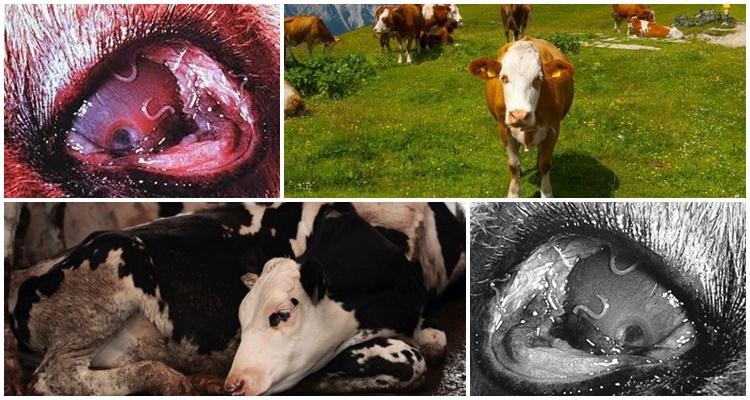
How to diagnose the disease
The diagnosis can be made after a veterinary study of the history. Diagnostic methods depend on the stage of the disease. When primary symptoms appear, a laboratory test of the tear fluid is performed. In some individuals, the first stage is almost asymptomatic. At the same time, it is impossible to identify the disease by external examination. In the laboratory, under a microscope, specialists study the tear fluid. In the presence of pathology, it is possible to identify sexually mature nematodes and their larvae.
A differential diagnosis is required. Thelaziosis is recommended to be distinguished from rhinotracheitis, rickettsial keratoconjunctivitis, lack of vitamin A. It should also be differentiated from non-infectious conjunctivitis and herpesvirus infection. Pathology is characterized by the following pathological changes:
- development of keratitis and conjunctivitis;
- opacity of the cornea;
- the formation of ulcerative defects on the cornea.
Disease treatment methods
Taking into account the severity of the course of thelaziosis, the veterinarian will select a therapy regimen. It should be comprehensive and include antibiotics, broad-spectrum anthelmintics, and immunomodulators. Also, homeopathy, medicinal ointments and drops are often prescribed to cattle.
Antibiotics
Antibacterial agents from the macrolide group help to obtain good results in the treatment of thelaziosis. It is recommended to place them once in the cavity of the conjunctival sac. It costs 5 days to apply the product. The most common remedy is "Azithromycin". For cattle, the dosage is 0.9-1.1 grams. At the very first symptoms of thelaziosis, you must immediately contact your veterinarian, without waiting for the appearance of subsequent stages.
Drops, ointments
To speed up recovery, you should use special solutions and drops.
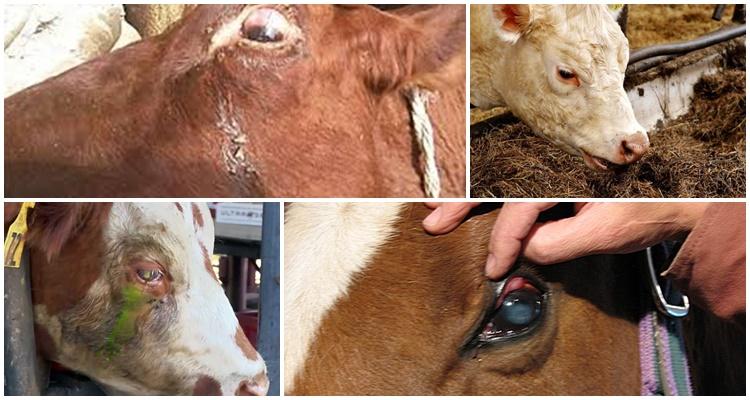
The most effective drugs include:
- Iodine solution with potassium iodide. To prepare it, you need to mix 1 gram of crystalline iodine with 1.5 grams of potassium iodide. Dilute the resulting composition with 2 liters of purified water. Rinse the affected eye three times a day. It is recommended to do this with a rubber-tipped syringe. 1 procedure requires 75 milliliters of solution.
- Boric acid solution with a concentration of 3%. It is recommended to moisten a cotton swab in it and wipe the walls of the eye cavity and the inner corner of the eye. Perform procedures three times a day for 5-7 days.
- Antibacterial penicillin drops for 50 thousand units. They are used with a prescription from a veterinarian.
- Novocaine-penicillin ointment. This remedy is used when ulcerative defects appear on the eye cornea. Before use, it is recommended to keep the composition at a temperature of + 2-4 degrees for 5-7 days.
- Infusions of chamomile, wild rosemary, calendula in a ratio of 1: 100.
In addition, the main therapy is supplemented with retrobulbar blockade using novocaine solution. To do this, 15-30 milliliters should be injected from the bottom and top of the eye. It is recommended to do this for at least 5 days until the symptoms pass.
Antiparasitic agents
To completely eliminate the pathology and prevent the appearance of thelaziosis in other animals, antiparasitic treatment is carried out for the entire herd. The most effective antiparasitic agents include:
- "Ivomek" is administered once. In this case, it is recommended to use 1 milliliter of medicine per 50 kilograms of individual weight.
- "Levamisole" is administered once. For 1 kilogram of body weight, it is worth using 0.0075 grams of the product.
- "Rivertin" - should be administered for 2 days at 0.2 grams per 1 kilogram of weight.
- "Faskoverm" is administered once. In this case, it is recommended to use 0.005 grams per 1 kilogram of weight.
- A solution of ditrazine-citrate with a concentration of 25% - it is administered subcutaneously with an interval of a day. The dosage is 0.016 grams per kilogram of body weight.

Prevention of cow thelaziosis
To avoid the appearance of thelaziosis, it is recommended to carry out preventive deworming and try to exterminate pasture flies. Preventive deworming is performed on animals during stalling and before pasture.
To kill flies, it is recommended to use the following:
- "Ectomin" at a concentration of 0.1%;
- "Neostomazan" at a concentration of 0.25% with an interval of 2-3 weeks;
- "Neocidol" at a concentration of 0.1%.
To combat flies indoors, it is recommended to use Ectomin at a concentration of 1-2%. You can also use the emulsion "Neocidol" at a concentration of 0.5%. Use 50-100 milliliters of the product per 1 square meter. It is recommended to enter the animals into the room not earlier than after 2 hours.
Cattle Thelaziosis is a rather dangerous pathology that can provoke complete blindness. It is almost impossible to cope with advanced forms of the disease. Therefore, at the first sign, it is worth consulting with a veterinarian.
